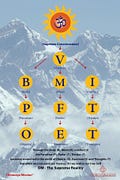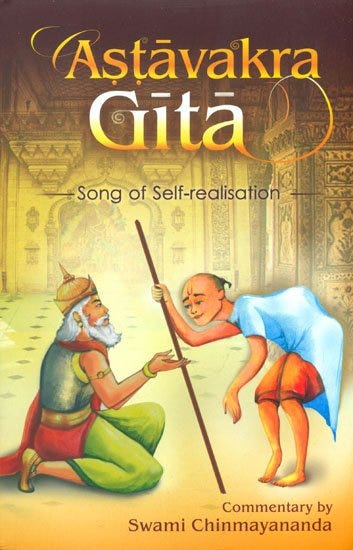In the Workshop
A few days ago, I had a visitor come to the workshop to consult with me on some questions about the spiritual lore of the Vedantic Tradition. After a short session in which we were able to resolve the issues in question I encouraged my friend to engage in a little intuitive browsing through the library in the workshop. This is a thing I often invite my visitors to do.
Most of my visitors come to the workshop to see me and talk about all kinds of philosophical and spiritual matters. Of course, I am happy to be of assistance. Nevertheless, in a certain way I am not the main attraction here. As I have mentioned in the short introduction in the About Section on this site, the workshop is a very special kind of environment. It is entirely permeated by the warm glow of the goddess Sophia. So, as you enter, you find yourself in a spiritual womb that fully embraces you with a vibrant loving atmosphere. This is the first special thing about this place: protection.
The second special thing about this place is the guidance. If you surrender to the magic of this space and let yourself be guided by its subtle flow, you will inevitably end up with finding a book or item that will be the all-permeating Spirit’s answer to the questions that have led you to this place. It is quite hard to explain how this really works. The room is alive and it interacts with you – that is if you let it.
Not surprisingly my friend swiftly found her way to the shelf where I keep all the books on Vedanta. After a little while I joined her to see if I could be of any assistance. She just stood there – completely transfixed. Looking at a framed post-card-sized chart located in the corner of the shelf in front of some of the books. Then she asked me:
“What is that?”
“This,” I said, “is the Mystic Key.”
“What is it?”
“It represents the quintessence of all the Vedantic teachings. Everything in a nutshell.”
“How does it work?”
“That is for me to know and for you to find out.”
“Why do I feel this intense kind of attraction towards this image?”
Smiling I said: “That is for the room to know and for you to find out.”
She continued looking at the chart for a little while. Then she asked:
“What now?”
“You have been given your homework. Now it is up to you to go back home and start investigating the matter by yourself. The name of this image is the BMI-Chart. It was popularized in the recent past by a man called Swami Chinmayananada Saraswati.
This is all you need to know to get started.”
She asked me if she could take a picture of the image. To which I gladly consented. After thanking me she left in a very elated mood. It was evident that she had found what she was looking for.
This then is the real magic of this place! The caretaker of the workshop, as you can clearly see by this example, is by far not as interesting as the divine spirit of Sophia that illuminates this sacred space.
The Introduction
Inspired by this little incident I thought that is might be useful to provide the readers of this site with a little basic introduction to this exceedingly interesting topic. Something you can use to get started. As with my friend, it is up to you where and how far you take it.
The best way to get introduced to the BMI-Chart is by Swami Chinmayananda himself. Unfortunately, this teacher is no longer with us; fortunately, we still have the recordings that were made during his lifetime. Following, then, is a short presentation given a few decades ago.
That is the explanation in brief. If you wish to engage in a somewhat deeper analysis of the chart, you can continue with the two discourses given by Swami Advayananda at the Chinmaya International Foundation.
This should be more than enough the get you started. Also, if you would like to know more about the life and activities of Swami Chinmayananda you can watch the following biography:
The Continuation
All those readers who would like to take the study of the Vedantic teachings in general and of the BMI-Chart in particular to the next level (and beyond!) may consider the following method of in-depth analysis and contemplation.
You will be needing two things for this course of study: (1.) A postcard-sized copy of the BMI-Chart and (2.) a copy of Swami Chinmayananda’s translation and commentary on the Ashtavakra Gita.
For those who know this book – you know. For those who hear this name for the first time: this book is one of the greatest mystical books ever written.
As you will be spending quite some time with this book during this course of study, we will restrict ourselves in this introduction to a mere ‘teaser-trailer’ in the form of two quotes from the introduction to the book:
In communicating to the seekers the unsurpassing beauty and indefinable perfections of the Absolute, the Upanisads stammer, the Brahmasutras exhaust themselves and the Bhagavad-gita hesitates with an excusable shyness. A theme, in dealing with which, even these mighty books of Hinduism are thus, at best, unsatisfactory. We must, in sheer gratitude, admire Astavakra Samhita for the brilliant success it has achieved in communicating, through words, perhaps more clearly, the nature and glory of the supreme Reality, than by past PrasthanaTraya. (p. iii)
Among the world’s classical works on contemplative experiences. Astavakra-gita, which is sometimes called Astavakra Samhita, is a unique textbook. It systematically deals with the mystical experiences of an individual in his fligh to the transcendental peace and Bliss. It has been said that the thoughts of this Gita are compatible with the ‘Dialogues of Plato’ and the Bhagavad-gita, as all of them truthfully record the universal insight and spiritual experiences which a seeker gathers during moments of his intense meditation. (p. 1)
For a more detailed introduction to the book, you can watch the eight lectures given by Swami Ishwarananda on the ChinmayaLAChannel.
Having acquired the chart and the book you are ready to engage. Using the chart as a convenient bookmark you will always have it close by to refer to it when you are studying the book.
The point of this course of study, then, is to engage with the chart and book simultaneously in a mutually supportive manner. Thus, as you progress through the book, you can use the chart as a basic organizing principle which will allow to gain a deeper understanding of its contents than would otherwise be possible. As you go deeper into the analysis and contemplation of the chart and book, you will notice that the interactions between these two will develop a magical synergy of their own. In this way, as you combine the study of the Vedanta in its extensive formulation and its quintessential representation, you will gradually advance your understanding of the Vedantic lore in a most skillful manner.
The Conclusion
If you are hesitant to jump into the deep end of the pool of Vedanta (i.e. the Ashtavakra Gita) right from the start, you can pursue a more gradual approach to the subject matter by reading the book entitled Safíthéa.
This book, which I have just recently published on Amazon, is intimately connected to the Ashtavakra Gita in two ways:
The first instant of close connection is that the Ashtavaktra Gita is one of the three primary scriptural sources for the teachings elaborated upon in the wisdom-section of the main part of the Red Pill (see the structural outline on p. 62). The other two being: Be As You Are by David Godman and Ramana, Shankara and the Forty Verses by Alan Jacobs. Therefore, if you want to go deeper into the analysis of the contents of the five chapters in this section, these are the three books to consult. Furthermore, there is a particularly close connection between the 13th chapter entitled Implementation and the book Be As You Are. Something that merits further investigation.
The second instant of close connection is that the Safíthéa was specifically designed to serve as a preliminary primer for all those who are looking for a way to approach the Vedantic Teachings in a gradual manner. As such the Safíthéa provides you with an ascending ‘stairway’ of lessons which allows you to conveniently advance from the most basic level of teaching right up to the most advanced level of teaching – as represented by the Ashtavakra Gita. Therefore, if you wish to proceed in a more structured and balanced manner, you can begin the journey by reading the Safíthéa and then, once you have built up a solid foundation, go ever deeper by means of the subsequent study and practice of the Ashtavakra Gita.
I would like to conclude this little excursion into the world of Vedantic thought and practice with a few personal remarks. In my estimation the Ashtavakra Gita is one of the greatest of all spiritual treasures on this planet. Since I was introduced to this book many years ago in a Vedantic Ashram in Rishikesh it has been a guiding light in my life and work. Thus, if I had to choose only one book to keep me company on a deserted island it would without a doubt be this one. What makes this statement even more interesting is that I say this as someone who has spent most of his time studying and training in other spiritual traditions and lineages of practice.
I hope this short introduction will inspire you to seek further and dive deeper!




